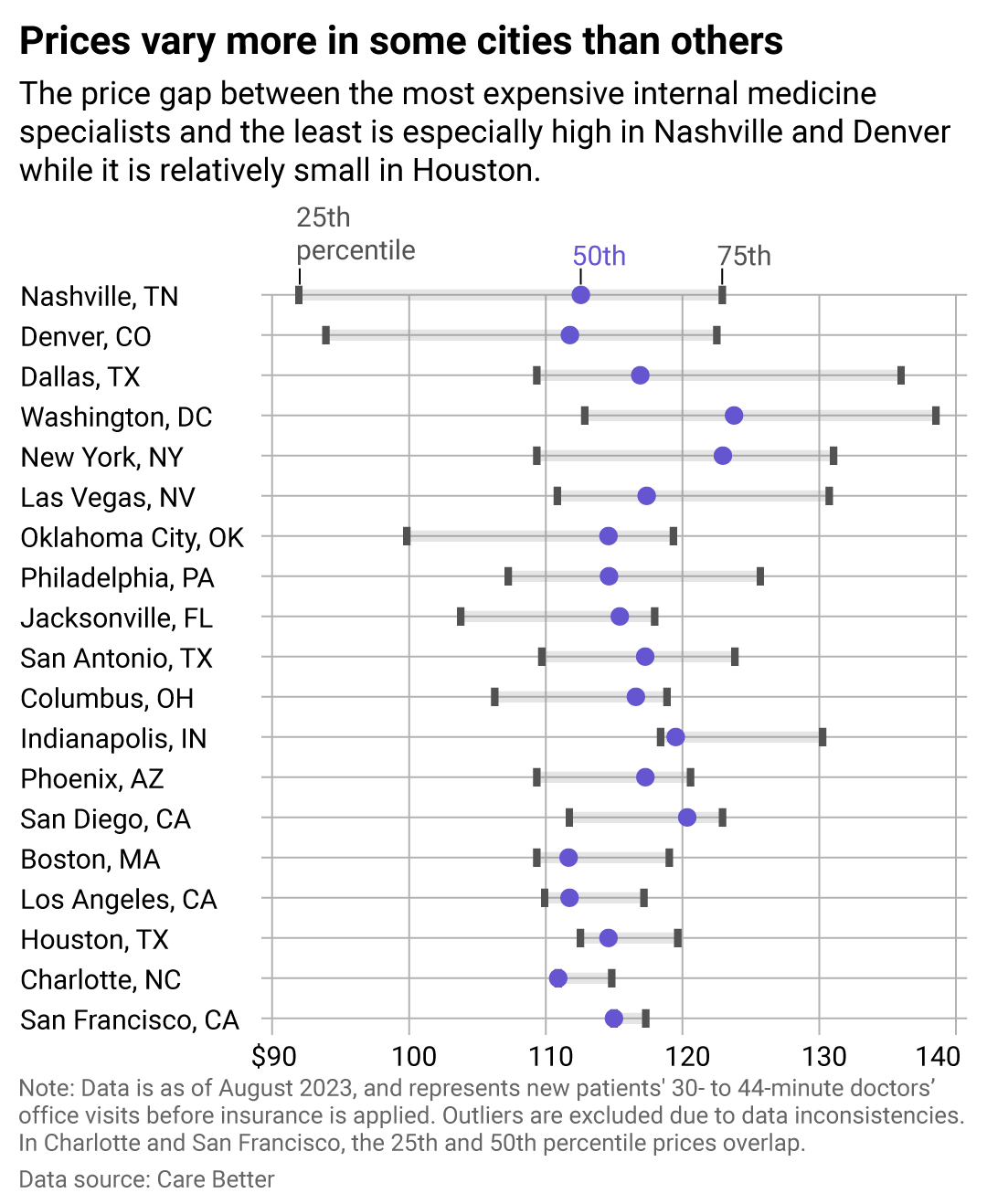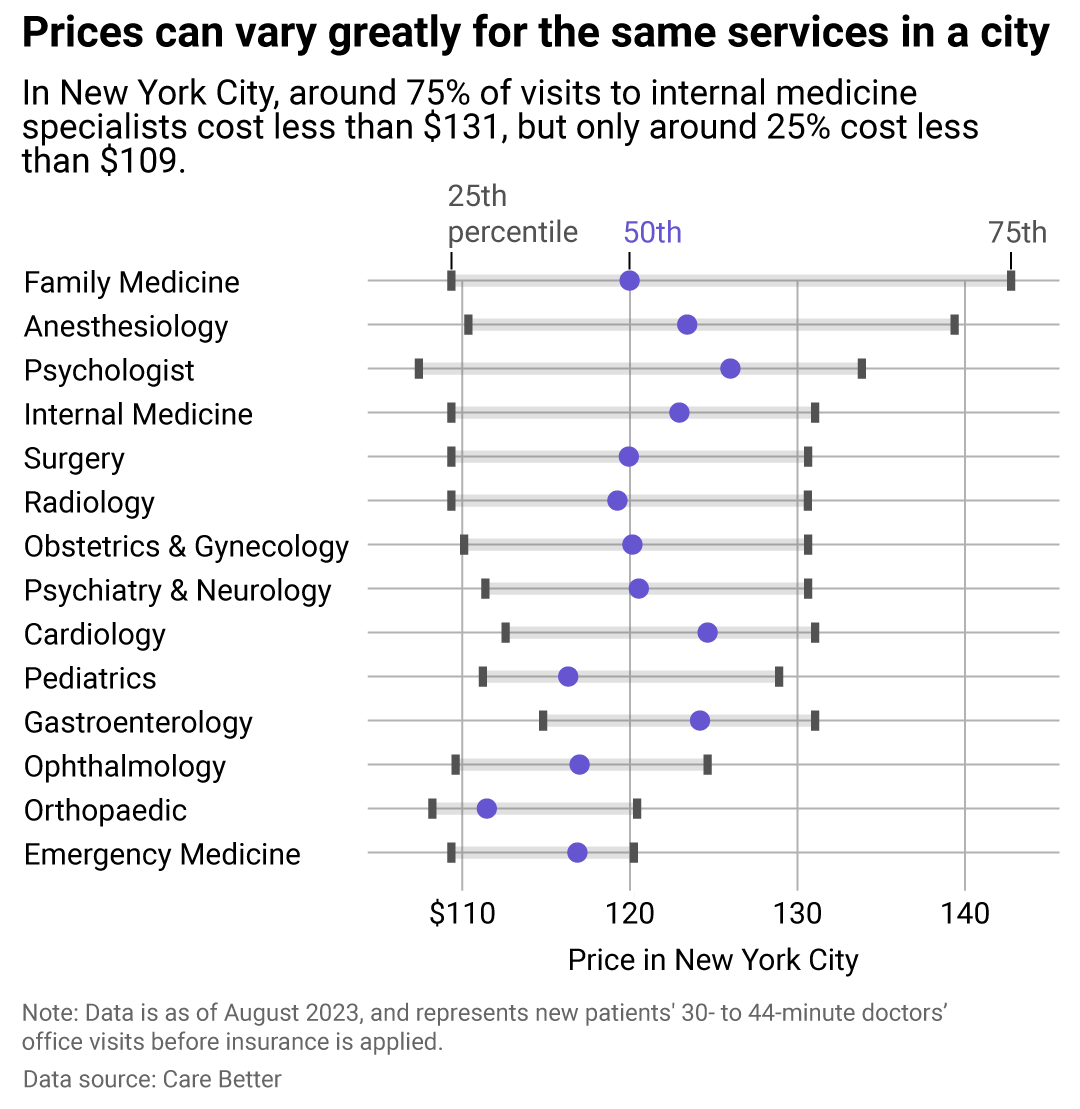
This story originally appeared on Care Better and was produced and distributed in partnership with Stacker Studio.
How much do prices for health services vary within a city?
Health care prices are notoriously opaque in America. A 2022 InstaMed survey reported that 71% of consumers found their medical bills confusing, while 76% received an unexpected charge.
Congress introduced a number of reforms in recent years designed to help people figure out how much various medical services actually cost. As of Jan. 1, 2021, hospitals must publish how much they charge for various services online, in formats that are easy for both consumers and machines to read.
This data, compiled by the Centers for Medicare and Medicaid Services, reveals prices can vary immensely from provider to provider. Care Better created its own database, based in part on CMS data, to make sense of these numbers.
Care Better data shows prices can vary drastically from doctor to doctor for the same services even within a single city, which is a compelling reason to shop around before committing. For the sake of simplicity, this data analysis focuses on new patients visiting doctors at their offices, on visits that lasted between 30 and 44 minutes. The analysis includes data through August 2023, for the 25 largest cities in America.
Internal medicine practitioners were the most common type of specialist seen by patients. On average, internal medicine doctors at the 25th percentile of costs charged around $107 for a typical office visit, while doctors at the 75th percentile of costs charged around $130. Based on this data, setting aside factors such as a doctor's popularity, or how high their reviews are, a consumer can easily save over 20% on doctor visits just by shopping around within the same city.

Prices vary more in some cities than in others
Looking again at internal medicine specialists, the price gap between more expensive doctors and more affordable ones was especially big in Denver. Internal medicine specialists in the Mile High City at the 75th percentile of cost charged around $123 for a 30- to 44-minute office visit, while their counterparts at the 25th percentile of cost only charged around $94. Nashville and Dallas had similarly large price gaps.
In contrast, San Francisco had the most competitive market. Internal medicine doctors at the 75th percentile of cost charged an estimated $117 for a typical office visit, while their less expensive colleagues charged about $115. In contrast to Nashville and Dallas, shopping around for doctors in the City by the Bay would seem to make little difference to patients' pocketbooks.

Prices vary a lot by specialty
Prices can vary a great deal within other specialties, too. Looking just at data from New York City, family medicine practitioners had the largest spread when it came to cost. Costlier family specialists (at the 75th percentile of prices) charged about $142 per office visit, while lower-cost family specialists (at the 25th percentile) charged about $109.
There was hardly any difference in what emergency medical practitioners charged: Doctors at the 75th percentile of priciness charged an average of $120, just about $11 more than their peers at the 25th percentile.
Data on health care prices will likely get better over time. Though price transparency regulations have improve, so far not all hospitals have complied. On Dec. 11, 2023, the House of Representatives passed the Lower Costs, More Transparency Act, which gives the government more power to enforce transparency laws, while also requiring a broader range of health care providers, such as imaging service providers, to publish their prices. Health care pricing will still be complicated, but it is welcome news for price-conscious patients.
Story editing by Shannon Luders-Manuel. Copy editing by Kristen Wegrzyn.



